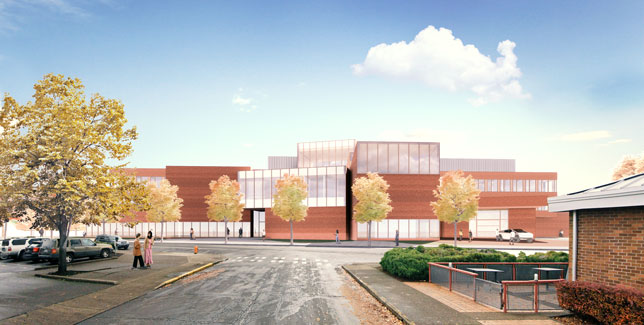Oregon State U Announces $200M Research Complex with Supercomputer for AI, Materials Science, and Robotics
- By Kate Lucariello
- 10/17/22

Artist rendering of the Jen-Hsun and Lori Huang Collaborative Innovation Complex
Oregon State University (OSU) in Corvallis has announced the construction of a $200 million research and education complex that will feature a powerful supercomputer to support research in AI, materials science, and robotics. The complex will provide students and researchers with the technology tools to tackle challenges in climate science, oceanography, sustainability, and water resources, as well as support OSU's education in semiconductors and other tech industries in and beyond Oregon.
The 150,000-square-foot facility, named the Jen-Hsun and Lori Huang Collaborative Innovation Complex, is supported by a $50 million gift from Jen-Hsun Huang, founder and CEO of computer company Nvidia, and his wife Lori, who are both OSU alumni. Nvidia will provide a supercomputer capable of "training the largest AI models and perform[ing] complex digital twin simulations,"the university said. It will incorporate NVIDIA DGX SuperPOD and OVX SuperPOD systems, and the water used for cooling will help heat buildings across the OSU campus. The center will also contain an advanced clean room, research laboratories, extended-reality theater, robotics and drone playground, and makerspace.
"The Jen-Hsun and Lori Huang Collaborative Innovation Complex will be an incredible contributor to our state and world by supporting innovation, entrepreneurship, and partnerships with industry and other higher education institutions,"said Edward Feser, OSU provost and executive vice president.
In 2023, with support from the governor and state legislators, OSU plans to request $75 million in state-paid bonding to match philanthropic and university contributions for the complex, as well as seek other donations. Part of the funding will support "targeted faculty hires and the university's goals to increase diversity in STEM fields,"OSU said. The center is expected to open in 2025. For more information, read the full release.
About the Author
Kate Lucariello is a former newspaper editor, EAST Lab high school teacher and college English teacher.